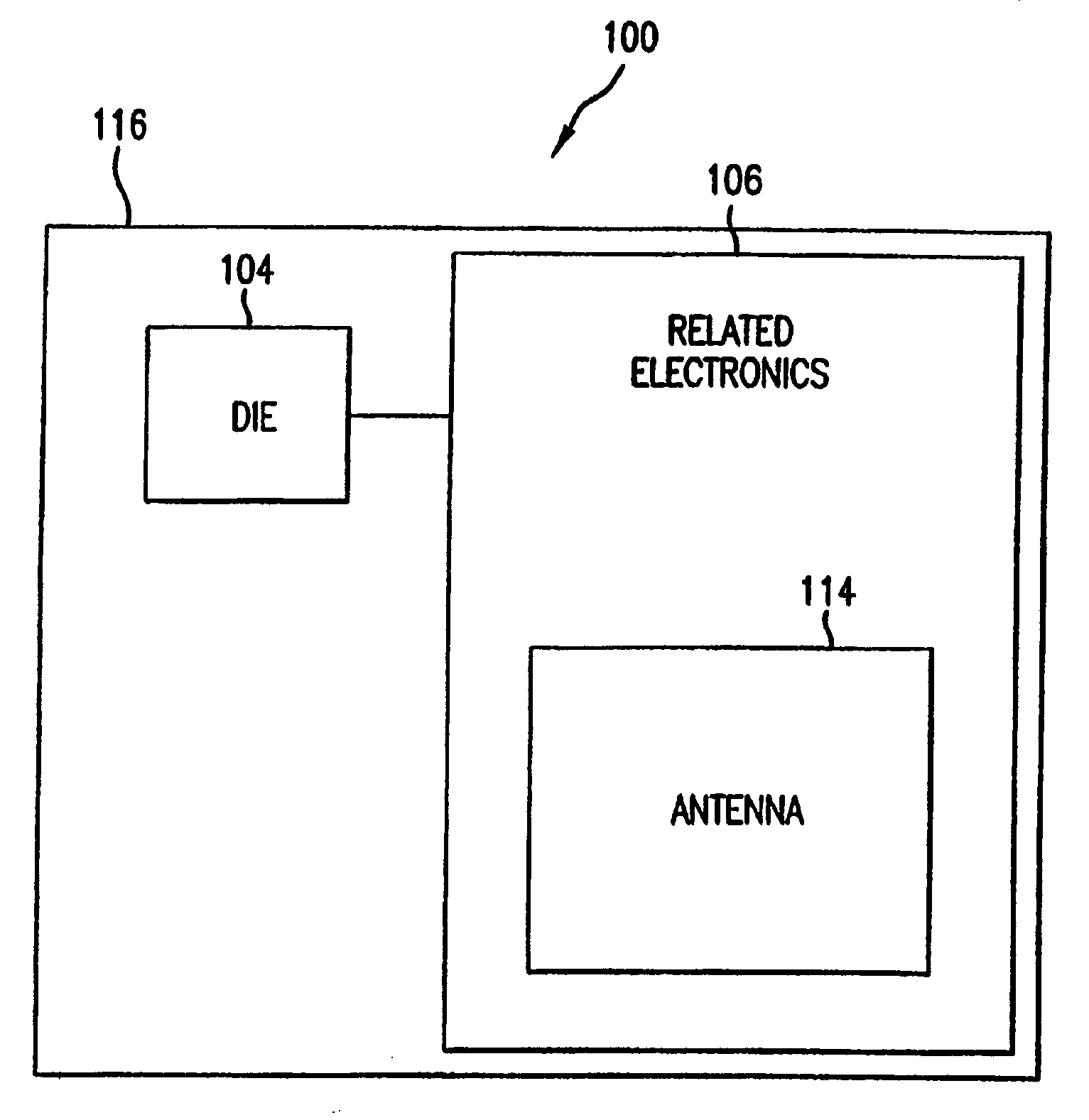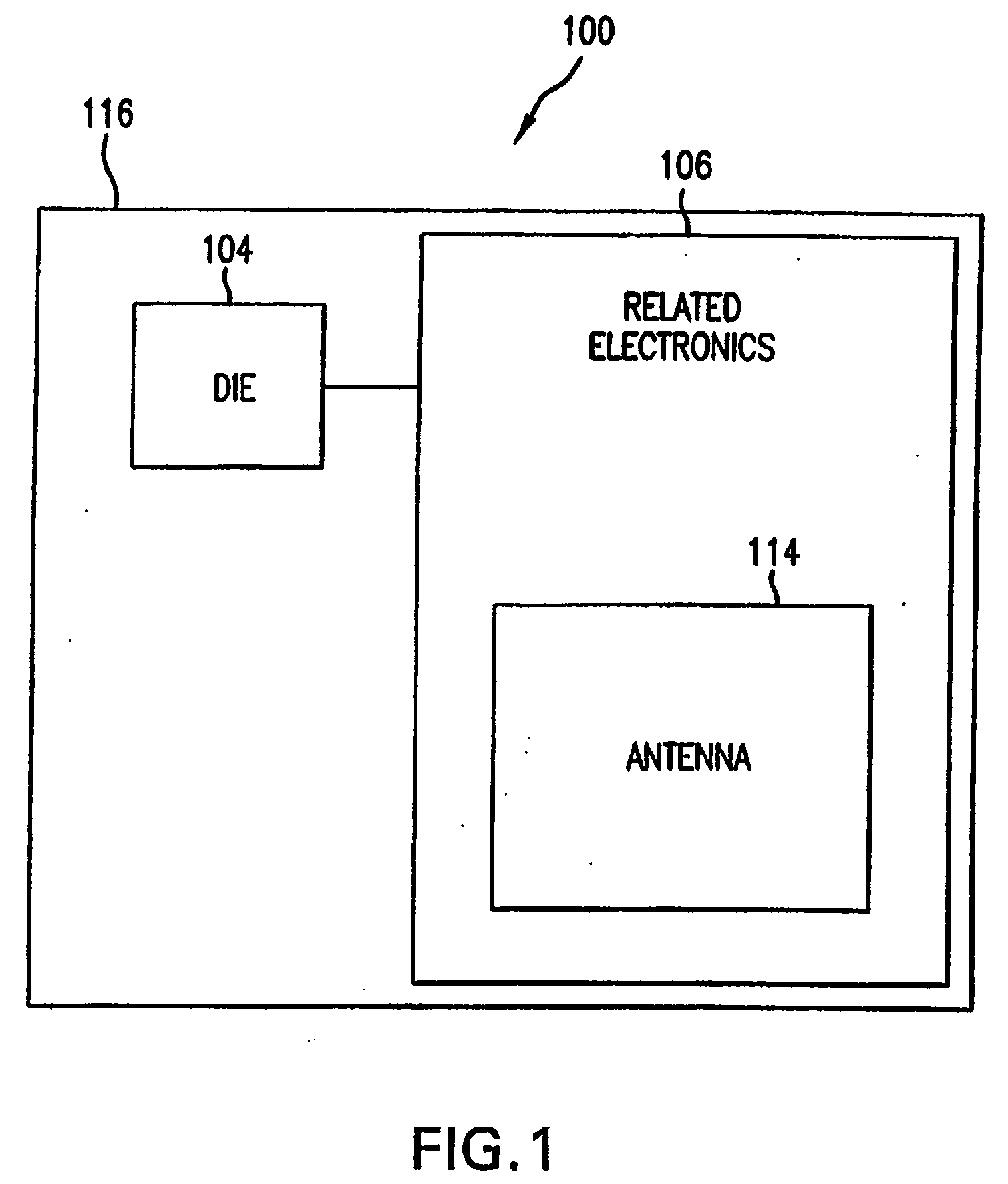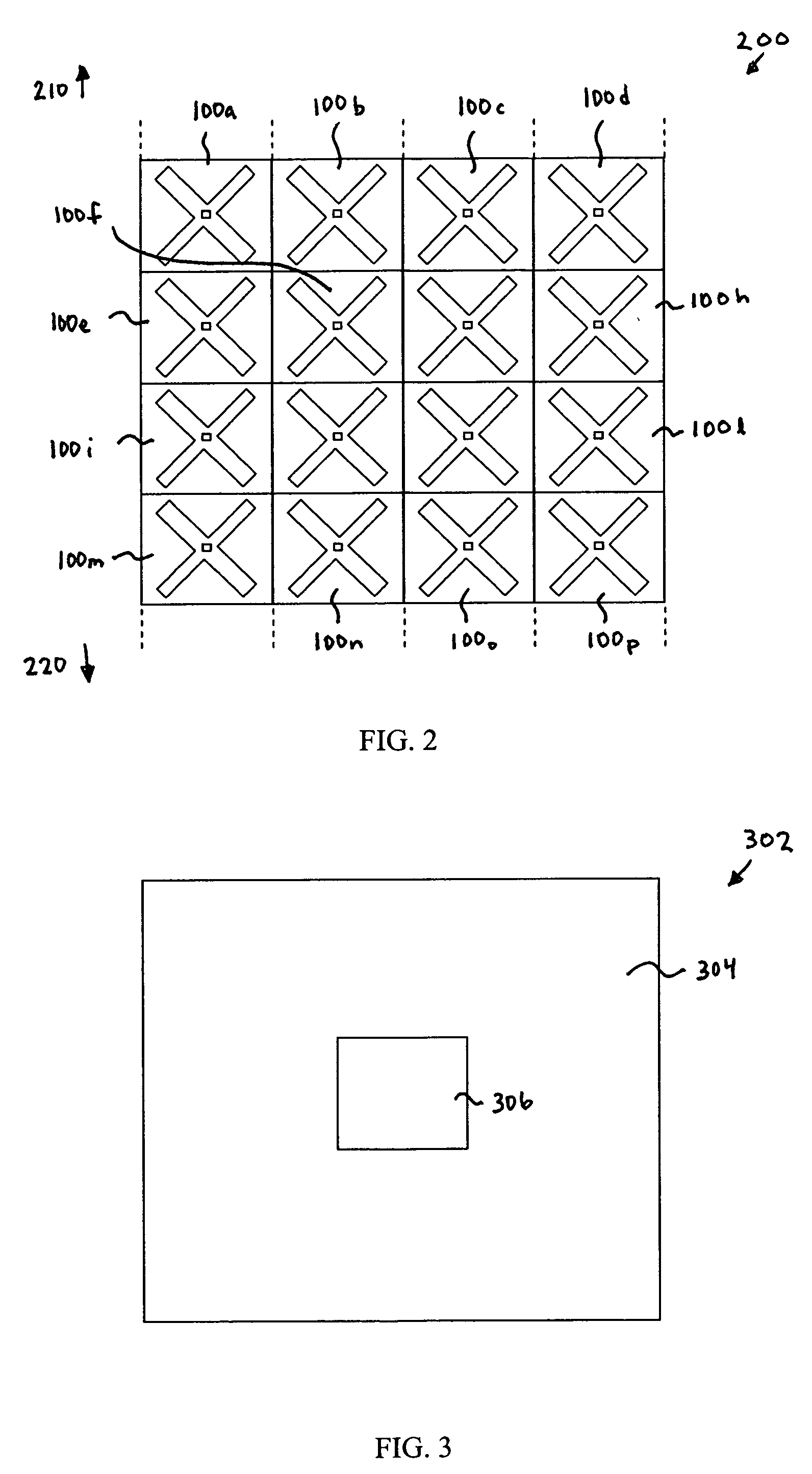Singulation of radio frequency identification (RFID) tags for testing and/or programming
a radio frequency identification and tag technology, applied in the direction of burglar alarm mechanical actuation, burglar alarm by hand-portable object removal, instruments, etc., can solve the problems of poor (e.g., functional), difficult to test before or after lamination process, and inability to perform good (e.g., functional) tags, etc., to achieve the effect of improving the handling of failed tags
- Summary
- Abstract
- Description
- Claims
- Application Information
AI Technical Summary
Benefits of technology
Problems solved by technology
Method used
Image
Examples
Embodiment Construction
Introduction
[0026] The present invention enables the interaction of an RF signal with electronic devices, such as tags fabricated in a roll (i.e., a single tag-width substantially continuous column) or web (i.e., a multi-tag width array of tags that is substantially continuous) of RFID tags. For example, the interaction may enable the testing and / or programming of RFID tags, including inlays and labels, such as ultra-high frequency (UHF) tags. Furthermore, in embodiments, the present invention allows for the marking of any failed tags for removal, sorting, disablement, and / or other purposes.
[0027] For illustrative purposes, the description herein primarily relates to the testing and programming of RFID tags. However, the invention is also adaptable to further electronic device types (e.g., electronic devices including one or more IC dies or other electrical components mounted thereto), as would be understood by persons skilled in the relevant art(s) from the teachings herein.
[00...
PUM
 Login to View More
Login to View More Abstract
Description
Claims
Application Information
 Login to View More
Login to View More - R&D
- Intellectual Property
- Life Sciences
- Materials
- Tech Scout
- Unparalleled Data Quality
- Higher Quality Content
- 60% Fewer Hallucinations
Browse by: Latest US Patents, China's latest patents, Technical Efficacy Thesaurus, Application Domain, Technology Topic, Popular Technical Reports.
© 2025 PatSnap. All rights reserved.Legal|Privacy policy|Modern Slavery Act Transparency Statement|Sitemap|About US| Contact US: help@patsnap.com



